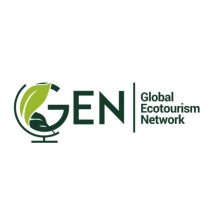Panel Discussions at Global Wildlife Fair
Come join us at the Global Wildlife Fair in New Delhi from October 10-12, 2025! Our event features a series of engaging panel discussions that bring together top experts to share their knowledge of wildlife conservation, ecotourism, and more. These sessions will inform, inspire, and foster a deeper understanding of wildlife conservation issues.
We've categorized our discussions into three key themes:
- Conservation
- Ecotourism
- Sustainable Development
Each category offers something unique, so there's something for everyone.
Conservation
- Elephant and other key species
-
- Corridors & Habitats: Creating safe pathways for elephants and other species to roam freely in their natural habitats
- Current Conservation Status: Understanding where we stand in the fight to protect our most majestic creatures.
- Threats to Survival: Facing the challenges that threaten the survival of our planet's giants.
- Global Efforts and Collaboration: Joining hands across the world to safeguard our wildlife for future generations
- The Role of Local Communities: Empowering local communities to be the guardians of the surrounding wildlife.
- What You Can Do to Help?: Discover simple ways you can make a big difference to conservation efforts.
- Rural Communities and Wildlife Habitats
-
- Community-Led Conservation: Celebrating the power of rural communities in leading the charge for conservation.
- Challenges of Coexistence: Exploring the delicate balance of living alongside wildlife in rural areas.
- Economic Benefits of Conservation: How protecting wildlife can bring prosperity to rural communities.
- Future of Rural-Wildlife Relationships: Envisioning a future where rural communities and wildlife thrive together.
- Water-based Landscapes and Flyways
-
- The Vital Role of Water Landscapes: Recognizing the lifeblood that water-based landscapes provide for countless species.
- Understanding Flyways: Mapping the incredible journeys of migratory species.
- Biodiversity Hotspots: Exploring water-based landscapes as critical zones for species diversity.
- Threats to Water Habitats and Flyways: Addressing the dangers that put our water habitats and migratory routes at risk.
- Global Impact of Flyways: Understanding how these natural highways connect ecosystems across the globe
- Cross-Border Collaboration: The importance of international cooperation in managing and protecting flyways.
- Innovative Restoration Techniques: methods being used to restore degraded water habitats.
- Citizen Science Initiatives: How everyday people can contribute to monitoring and conserving flyways.
- Education & Outreach
-
- Empowering Future Generations: Inspiring young minds to become wildlife advocates.
- Interactive Learning: Engaging communities through hands-on conservation experiences.
- Digital Tools for Education: Utilizing technology to spread awareness and knowledge.
- Storytelling for Impact: Using compelling narratives to drive conservation action.
- Partnerships with Schools: Collaborating with educational institutions for wildlife education.
- Inclusive Outreach: Ensuring conservation education reaches diverse and underrepresented groups.
- Community-Driven Programs: Highlighting successful grassroots education initiatives.
- Measuring Impact: Assessing the effectiveness of education and outreach efforts.
- Capacity Building & Training
-
- Inspiring Young Wildlife Champions: Encouraging the next generation to take up the mantle of wildlife advocacy.
- Learning by Doing: Bringing communities closer to nature through hands-on conservation activities.
- Guiding Responsible Travel: Teaching sustainable tourism practices that protect wildlife and benefit local communities.
- Nurturing Local Heroes: Empowering communities to lead their own conservation efforts.
- Embracing Technology for Wildlife: Making use of innovative tools to keep wildlife safe and monitored.
- Growing Conservation Leaders: Mentoring passionate individuals to become leaders in wildlife preservation.
- Skills for Sustainable Livelihoods: Offering training that helps local people earn a living while protecting their environment.
- Lifelong Learning for Conservation: Supporting ongoing education and growth for those dedicated to saving wildlife.
- Science & Research
-
- Uncovering Nature's Secrets: Exploring the mysteries of wildlife through groundbreaking research.
- Innovating for Conservation: Developing new technologies to protect endangered species.
- Understanding Ecosystems: Studying the complex relationships that sustain our planet’s biodiversity.
- Tracking Wildlife: Using science to monitor animal populations and their habitats.
- Preserving Genetic Diversity: Safeguarding the future of species through cutting-edge genetic research.
- Data-Driven Decisions: Informing conservation strategies with robust scientific data.
- Climate Change Impact: Researching how changing climates affect wildlife and ecosystems.
- Collaborative Discoveries: Bringing together global scientists to share knowledge and solutions.
Ecotourism
- Safari Management
-
- Responsible Wildlife Viewing: Ensuring safaris prioritize animal welfare and natural behaviors.
- Guiding with Integrity: Training guides to educate and inspire respect for nature.
- Habitat Preservation: Balancing safari activities with the need to protect wildlife habitats.
- Visitor Safety: Creating safe and respectful safari experiences for both visitors and wildlife.
- Sustainable Practices: Implementing eco-friendly practices in safari operations.
- Supporting Local Communities: Using safari tourism to provide economic benefits to surrounding areas.
- Conservation Funding: Channeling safari profits into wildlife protection efforts.
- Education Through Experience: Turning every safari into a learning opportunity about wildlife and ecosystems.
- Integration of Indigenous Communities
-
- Cultural Guardianship: Empowering Indigenous people to protect and share their cultural heritage.
- Community-Led Conservation: Involving Indigenous voices in conservation decisions and practices.
- Economic Empowerment: Creating opportunities for indigenous communities through tourism and conservation.
- Preserving Traditions: Supporting the continuation of indigenous knowledge and practices.
- Collaborative Stewardship: Partnering with indigenous groups to manage natural resources.
- Respectful Engagement: Ensuring that indigenous communities are active participants in conservation efforts.
- Knowledge Sharing: Incorporating traditional ecological knowledge into modern conservation strategies.
- Cultural Exchange: Fostering mutual understanding and respect between visitors and indigenous people.
- Disadvantaged Group Benefits
-
- Inclusive Opportunities: Ensuring that disadvantaged groups benefit from conservation and tourism.
- Empowering Marginalized Voices: Giving a platform to those often overlooked in environmental discussions.
- Economic Upliftment: Creating jobs and income streams for disadvantaged communities through eco-friendly initiatives.
- Accessible Conservation: Making sure that conservation efforts are inclusive and beneficial to all.
- Education and Training: Providing skills and knowledge to disadvantaged groups to take part in ecotourism and conservation.
- Building Resilience: Supporting vulnerable communities in adapting to environmental and economic challenges.
- Fair Distribution of Benefits: Ensuring that profits from tourism and conservation are shared equitably.
- Social Justice in Conservation: Advocating for policies that protect the rights and well-being of disadvantaged groups.
- Photography Ethics
-
- Respecting Wildlife: Encouraging photographers to capture images without disturbing animals.
- Truth in Imagery: Promoting honest representation of wildlife and natural environments.
- Cultural Sensitivity: Ensuring that images of local people and their traditions are taken with respect and consent.
- Environmental Awareness: Educating photographers on the impact their presence can have on delicate ecosystems.
- Responsible Sharing: Advocating for the ethical use of wildlife and cultural images in media and marketing.
- Safety First: Encouraging photographers to prioritize the safety of themselves and the subjects they capture.
- Promoting Conservation: Using photography as a tool to raise awareness and support for conservation efforts.
- Inspiring Action: Motivating people to protect nature through powerful, ethical imagery.
- Community-based Tourism Case Studies & Examples
-
- Local Empowerment: Highlighting success stories where communities take charge of tourism.
- Cultural Preservation: Showcasing how tourism can help maintain traditions and heritage.
- Economic Transformation: Exploring examples of tourism driving sustainable local economies.
- Conservation Success: Demonstrating how community tourism leads to effective wildlife protection.
- Collaborative Models: Sharing insights from partnerships between communities and conservation organizations.
- Authentic Experiences: Celebrating cases where tourists engage meaningfully with local cultures.
- Resilience Building: Examining how tourism has helped communities withstand environmental challenges.
- Global Inspiration: Offering lessons from successful community tourism projects around the world.
- Eco-sensitive Zone
-
- Protecting Fragile Ecosystems: Highlighting the importance of safeguarding delicate environments.
- Balancing Development and Conservation: Exploring strategies to manage human activity in sensitive areas.
- Biodiversity Hotspots: Showcasing the unique wildlife and plants found in eco-sensitive zones.
- Community Involvement: Discussing the role of local people in managing eco-sensitive areas.
- Regulating Tourism: Examining how to control visitor numbers to prevent damage.
- Policy and Enforcement: Highlighting the need for strong laws to protect vulnerable areas.
- Education and Awareness: Promoting the importance of educating visitors about eco-sensitive zones.
- Success Stories: Sharing examples of effective protection and management of eco-sensitive areas.
- Overtourism
-
- Strain on Local Resources: Discussing the impact of too many visitors on local infrastructure.
- Environmental Degradation: Exploring how overtourism leads to habitat destruction and pollution.
- Community Displacement: Highlighting the challenges faced by locals because of excessive tourism.
- Cultural Erosion: Examining how mass tourism can dilute and commercialize local traditions.
- Visitor Experience: Addressing how overcrowding can diminish the quality of the tourist experience.
- Sustainable Alternatives: Promoting ways to manage and distribute tourist numbers more effectively.
- Education and Awareness: Encouraging tourists to be mindful of their impact on destinations.
- Policy Interventions: Discussing the role of governments in regulating and controlling tourism flow.
- Role of Media in Ecotourism
-
- Raising Awareness: Highlighting how media can educate the public about ecotourism and conservation.
- Shaping Perceptions: Exploring the media’s influence on how people view nature and wildlife.
- Promoting Destinations: Discussing the media's role in bringing attention to eco-friendly travel spots.
- Advocacy and Activism: Examining how media can be a tool for promoting conservation efforts.
- Highlighting Best Practices: Sharing stories of successful ecotourism initiatives through media.
- Ethical Reporting: Encouraging responsible journalism that accurately represents ecotourism and its challenges.
- Combatting Misinformation: Addressing the importance of factual and balanced media coverage.
- Inspiring Action: Discuss how powerful media narratives can drive people to support conservation causes.
- Homestay vs. Hotel
-
- Authentic Local Experiences: Comparing the cultural immersion offered by homestays versus hotels.
- Economic Impact: Examining how each option supports the local economy differently.
- Environmental Footprint: Discussing the environmental impact of homestays versus hotels.
- Personal Connection: Exploring the unique relationships formed between guests and hosts in homestays.
- Comfort and Convenience: Comparing the amenities and services offered by hotels and homestays.
- Cultural Exchange: Highlighting how homestays foster deeper understanding between travelers and locals.
- Supporting Small Businesses: Discussing the role of homestays in empowering local entrepreneurs.
- Tourist Expectations: Examining how traveler preferences shape the demand for homestays and hotels.
-
Development of Values and Infrastructure
- Green Spaces
-
- Urban Oases: Creating parks and gardens that bring nature into cities.
- Biodiversity Corridors: Connecting green spaces to support wildlife movement and conservation.
- Mental and Physical Wellbeing: Highlighting the health benefits of accessible green areas.
- Community Engagement: Involving locals in the creation and maintenance of green spaces.
- Climate Resilience: Designing green spaces that help cities adapt to changing climates.
- Education and Recreation: Using green spaces as living classrooms and community hubs.
- Pollution Reduction: Discussing the role of green spaces in improving air and water quality.
- Global Best Practices: Learning from successful green space initiatives around the world.
- Green Energy
-
- Renewable Power Sources: Promoting solar, wind, and other sustainable energy options.
- Energy Independence: Exploring how green energy reduces reliance on fossil fuels.
- Community-Driven Projects: Highlighting local initiatives that bring green energy to communities.
- Innovative Technologies: Showcasing advancements in renewable energy that are changing the world.
- Economic Benefits: Discussing how green energy can create jobs and drive economic growth.
- Reducing Carbon Footprints: Encouraging the adoption of green energy to combat climate change.
- Energy Equity: Ensuring all communities have access to affordable, clean energy.
- Global Impact: Sharing success stories of green energy adoption from around the world.
- Water Management
-
- Conservation Strategies: Promoting practices that reduce water waste and preserve this vital resource.
- Sustainable Agriculture: Exploring water-efficient farming methods that support food security.
- Rainwater Harvesting: Highlighting traditional and modern techniques for capturing and using rainwater.
- Wastewater Treatment: Discussing innovative approaches to recycling and reusing water.
- Community Participation: Involving locals in water management projects to ensure long-term success.
- Protecting Water Sources: Advocating for the preservation of rivers, lakes, and groundwater.
- Climate Change Adaptation: Addressing how water management can help communities cope with changing weather patterns.
- Education and Awareness: Teaching the importance of water conservation at all levels of society.
- Do’s & Don’ts of Sustainable Living
-
- Reduce, Reuse, Recycle: Encouraging daily habits that minimize waste and resource use.
- Eco-Friendly Transportation: Promoting walking, cycling, and public transport as greener alternatives.
- Conscious Consumption: Advocating for mindful purchasing decisions that reduce environmental impact.
- Energy Conservation: Offering tips on how to save energy at home and in the workplace.
- Water-Saving Practices: Suggesting simple changes to reduce water usage.
- Supporting Local: Encouraging the purchase of locally-produced goods to reduce carbon footprints.
- Avoiding Single-Use Plastics: Highlighting the importance of reducing plastic waste.
- Living Lightly: Inspiring a lifestyle that prioritizes sustainability, simplicity, and respect for nature.
- Nature & Spiritualism in India
-
- Sacred Groves: Exploring the deep connection between ancient forests and spiritual practices.
- Meditation in Nature: Highlighting the healing power of meditating in natural surroundings.
- Pilgrimages to Natural Sites: Discussing the spiritual significance of rivers, mountains, and forests in Indian culture.
- Eco-spiritual Practices: Promoting rituals that honor and protect the environment.
- Ayurveda and Nature: Exploring how traditional Indian medicine is rooted in nature's wisdom.
- Yoga in the Wild: Emphasizing the spiritual benefits of practicing yoga in natural settings.
- Cultural Reverence for Nature: Showcasing how Indian traditions celebrate and respect the natural world.
- Preserving Sacred Landscapes: Advocating for the protection of natural sites with spiritual significance.
- Noise & Light Pollution
-
- Impact on Wildlife: Discussing how excessive noise and light disrupt animal behaviors and ecosystems.
- Human Health Concerns: Highlighting the effects of noise and light pollution on mental and physical well-being.
- Stargazing and Light Pollution: Exploring how artificial light affects our ability to experience the night sky.
- Quiet Zones: Promoting the creation of areas free from noise pollution to protect natural soundscapes.
- Dark Sky Reserves: Advocating for the preservation of dark skies to combat light pollution.
- Community Solutions: Encouraging local efforts to reduce noise and light pollution in urban areas.
- Cultural and Spiritual Impact: Examining how noise and light pollution interfere with cultural practices and spiritual experiences.
- Policy and Regulation: Discussing the need for stricter laws to control noise and light pollution for the benefit of people and nature.
- Carbon Footprint Calculator
-
- Understanding Impact: Teaching how to measure and reduce one's carbon footprint in ecotourism.
- Promoting Low-Impact Travel: Encouraging eco-friendly travel choices that minimize environmental impact.
- Education and Awareness: Raising awareness about the carbon emissions associated with tourism.
- Actionable Steps: Providing practical tips for reducing carbon emissions while traveling.
- Sustainable Practices: Encouraging the use of carbon calculators in ecotourism planning.
- Tracking Progress: Monitoring carbon reduction efforts over time.
- Involving Tourists: Engaging visitors in efforts to offset their carbon footprints.
- Supporting Conservation: Using carbon savings to fund conservation initiatives.
- Low Input and High Output Methods
-
- Efficient Resource Use: Teaching how to achieve maximum results with minimal environmental impact.
- Sustainable Tourism Models: Developing ecotourism practices that are both effective and eco-friendly.
- Cost-Effective Conservation: Exploring ways to conserve resources while achieving conservation goals.
- Innovative Techniques: Sharing new methods that increase efficiency in ecotourism and conservation.
- Maximizing Impact: Ensuring that conservation efforts provide significant benefits with low resource input.
- Community Engagement: Involving locals in creating and implementing low-input, high-output strategies.
- Long-Term Sustainability: Focusing on methods that are sustainable over the long term.
- Measuring Success: Monitoring the effectiveness of these methods in conservation and tourism.
- Learning Ecotourism Marketing
-
- Promoting Responsible Tourism: Teaching how to market ecotourism in a way that emphasizes sustainability.
- Attracting the Right Audience: Focusing on marketing strategies that appeal to eco-conscious travelers.
- Storytelling for Conservation: Using powerful narratives to promote ecotourism and conservation goals.
- Digital Marketing Skills: Learning how to leverage online platforms for ecotourism promotion.
- Community Involvement: Encouraging local communities to take part in marketing efforts.
- Transparency and Ethics: Ensuring that marketing practices align with the values of sustainability.
- Measuring Marketing Impact: Tracking the effectiveness of marketing campaigns in attracting visitors.
- Building Partnerships: Creating collaborations with other businesses and organizations to boost marketing efforts.







